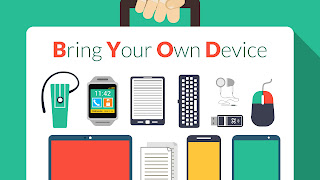Twitter Feed
“Cash for Clunkers” Should Have Used the Cloud!
Rich Bruklis wrote an excellent essy on how the government missed a perfect opportunity to use cloud computing. In “Cloud Opportunity Missed” he writes: “It appears that the voucher system…
US Navy Experiments With Secure Cloud Computing
This week in San Diego, CA the US Navy held the initial planning conference for Trident Warrior ’10. The Trident Warrior series is the premier annual FORCEnet Sea Trial Event…
GSA To Present On Cloud Initiative at NCOIC Plenary
A General Services Administration (GSA) representative is now scheduled to provide a briefing on the agency’s cloud computing initiative during a “Best Practices for Cloud Initiatives using Storefronts” session on…
FAA CIO Focuses on Cybersecurity
During this week Federal Executive Forum, FAA CIO Dave Bowen mentioned protection against software vulnerabilities, wireless intrusion and website vulnerabilities as his top cybersecurity priorities. As the Assistant Administrator for…
DHS Asst. Secretary Addresses Cybersecurity Priorities
Greg Schaffer, Assistant Secretary for CyberSecurity & Communications for the US Department of Homeland Security, sees Trusted Internet Connections, EINSTEIN, and front line defense of the nation’s networks as top…
US DoD Chief Security Officer on Cybersecurity Priorities
In a Federal Executive Forum interview, Robert Lentz, Chief Security Officer for the US Department of Defense, highlighted the departments cybersecurity priorities. Mr. Lentz is the Deputy Assistant Secretary of…
Twitter Under Denial of Service Attack
Multiple sources are reporting that Twitter continues to be under a denial of service attack. Some are speculating that this represents the power of a coordinated bot network attack. For…
NCOIC Holding Full Day Cloud Computing Session
The Network Centric Operations Industry Consortium (NCOIC) will be holding a one-day cloud computing session during its plenary meetings, 21-25 September at the Fair Lakes Hyatt in Fairfax, VA. A…
Sevatec a New Player in the Federal Cloud Computing Market
Just in time for the new Federal Cloud Computing Storefront, Sevatec, Inc. is announcing the development of a toolkit to help federal agencies transform their enterprise architectures to cloud computing…
GSA Releases Cloud Computing RFQ
Following through on a much anticipated action, GSA released their Cloud Computing Request For Quotation (RFQ) today. Cloud computing is a major part of President Obama’s reform effort and this…
- Increased employee mobility (63%), satisfaction (56%) and productivity (55%) dominate as the top drivers of BYOD. These employee related drivers are considered more important than reduced costs (47%).
- Security (39%) and employee privacy (12%) are the biggest inhibitors of BYOD adoption.
- 20% of surveyed organizations have suffered a mobile security breach, primarily driven by malware and malicious WiFi.
- Security threats to BYOD impose heavy burdens on organizations’ IT resources (35%) and help desk workloads (27%).
- Despite increasing mobile security threats, data breaches and new regulations, only 30% of organizations are increasing security budgets for BYOD in the next 12 months and 37% have no plans to change their security budgets.
- 72% – Data leakage/loss
- 56% – Unauthorized access to company data and systems
- 54% – Downloading of unsafe apps or content
- 52% – Malware
- 50% – Lost or stolen devices
- 49% – Vulnerability exploitation
- 48% – Lack of control on endpoint security
- 39% – Infrequent software updates
- 38% – Compliance
1. Create your policy before procuring technology: To effectively use mobile device management (MDM) technology for employee owned devices Policy must precede technology. Also note that these policies will have broad corporate-wide implications for IT, HR, legal, and security.
- Mobile device management
- Application security assessments
- Application testing services
- Application source code security assessments; and
- Embedded device security.
This post was brought to you by IBM Global Technology Services. For more content like this, visit ITBizAdvisor.com.
( Thank you. If you enjoyed this article, get free updates by email or RSS – © Copyright Kevin L. Jackson 2017)
Cloud Computing
- CPUcoin Expands CPU/GPU Power Sharing with Cudo Ventures Enterprise Network Partnership
- CPUcoin Expands CPU/GPU Power Sharing with Cudo Ventures Enterprise Network Partnership
- Route1 Announces Q2 2019 Financial Results
- CPUcoin Expands CPU/GPU Power Sharing with Cudo Ventures Enterprise Network Partnership
- ChannelAdvisor to Present at the D.A. Davidson 18th Annual Technology Conference
Cybersecurity
- Route1 Announces Q2 2019 Financial Results
- FIRST US BANCSHARES, INC. DECLARES CASH DIVIDEND
- Business Continuity Management Planning Solution Market is Expected to Grow ~ US$ 1.6 Bn by the end of 2029 - PMR
- Atos delivers Quantum-Learning-as-a-Service to Xofia to enable artificial intelligence solutions
- New Ares IoT Botnet discovered on Android OS based Set-Top Boxes


